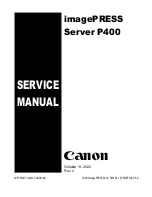
v
The maximum number of single-, dual-rank, ECC supported UDIMM the server
supports is 12.
v
The memory controller has three registered DIMM channels per microprocessor
(Channels 0, 1, and 2). Channels 0 and 1 support three DIMMS and Channel 2
supports two DIMMs.
v
Install DIMMs starting with the connector farthest from the microprocessor within
each channel.
v
The maximum operating speed of the server is determined by the slowest DIMM
in the server.
v
The server can operate in three modes: sparing, mirroring and independent
channel modes.
Note:
Memory sparing is only available for Intel Xeon 5600 series
microprocessor.
v
The server supports 1 GB, 2 GB, 4 GB, and 8 GB DIMMs, with a minimum of 1
GB and a maximum of 128 GB of system memory.
For 32-bit operating systems only:
Some memory is reserved for various
system resources and is unavailable to the operating system. The amount of
memory that is reserved for system resources depends on the operating system,
the configuration of the server, and the configured PCI devices.
Note:
If you install a ServeRAID-M1015 SAS/SATA adapter, make sure at least 2
GB of memory is installed in the server before you run DSA from a bootable CD.
Independent channel mode
The server requires at least one installed DIMM per microprocessor. The server
comes with a minimum of two 1 GB DIMMs, installed in connectors 3 and 6.
(Connectors 3 and 6 are the farthest connectors from the microprocessor 1 for
channels 0 and 1.) When you install additional DIMMs, install them in the order
shown in Table 11, to maintain server performance.
Note:
v
If you have configured the server to use memory mirroring, do not use the order
shown in this table; use the installation order that is shown in Table 13 on page
229.
v
If you install a ServeRAID-M1015 SAS/SATA adapter, make sure at least 2 GB of
memory is installed in the server before you run DSA from a bootable CD.
Table 11. DIMM installation sequence for independent channel mode
Installed microprocessors
DIMM connector population sequence
Microprocessor 1
3, 6, 8, 2, 5, 7, 1, 4
Microprocessor 1 and Microprocessor 2
3, 11, 6, 14, 8, 16, 2, 10, 5, 13, 7, 15, 1, 9,
4, 12
Chapter 5. Removing and replacing server components
227
Summary of Contents for 7378
Page 1: ...IBM System x3400 M3 Types 7378 and 7379 Problem Determination and Service Guide...
Page 2: ......
Page 3: ...IBM System x3400 M3 Types 7378 and 7379 Problem Determination and Service Guide...
Page 40: ...22 IBM System x3400 M3 Types 7378 and 7379 Problem Determination and Service Guide...
Page 158: ...140 IBM System x3400 M3 Types 7378 and 7379 Problem Determination and Service Guide...
Page 166: ...148 IBM System x3400 M3 Types 7378 and 7379 Problem Determination and Service Guide...
Page 187: ...Chapter 5 Removing and replacing server components 169...
Page 192: ...174 IBM System x3400 M3 Types 7378 and 7379 Problem Determination and Service Guide...
Page 194: ...176 IBM System x3400 M3 Types 7378 and 7379 Problem Determination and Service Guide...
Page 196: ...178 IBM System x3400 M3 Types 7378 and 7379 Problem Determination and Service Guide...
Page 318: ...300 IBM System x3400 M3 Types 7378 and 7379 Problem Determination and Service Guide...
Page 352: ...334 IBM System x3400 M3 Types 7378 and 7379 Problem Determination and Service Guide...
Page 360: ...342 IBM System x3400 M3 Types 7378 and 7379 Problem Determination and Service Guide...
Page 361: ......
Page 362: ...Part Number 00KC028 Printed in USA 1P P N 00KC028...
















































